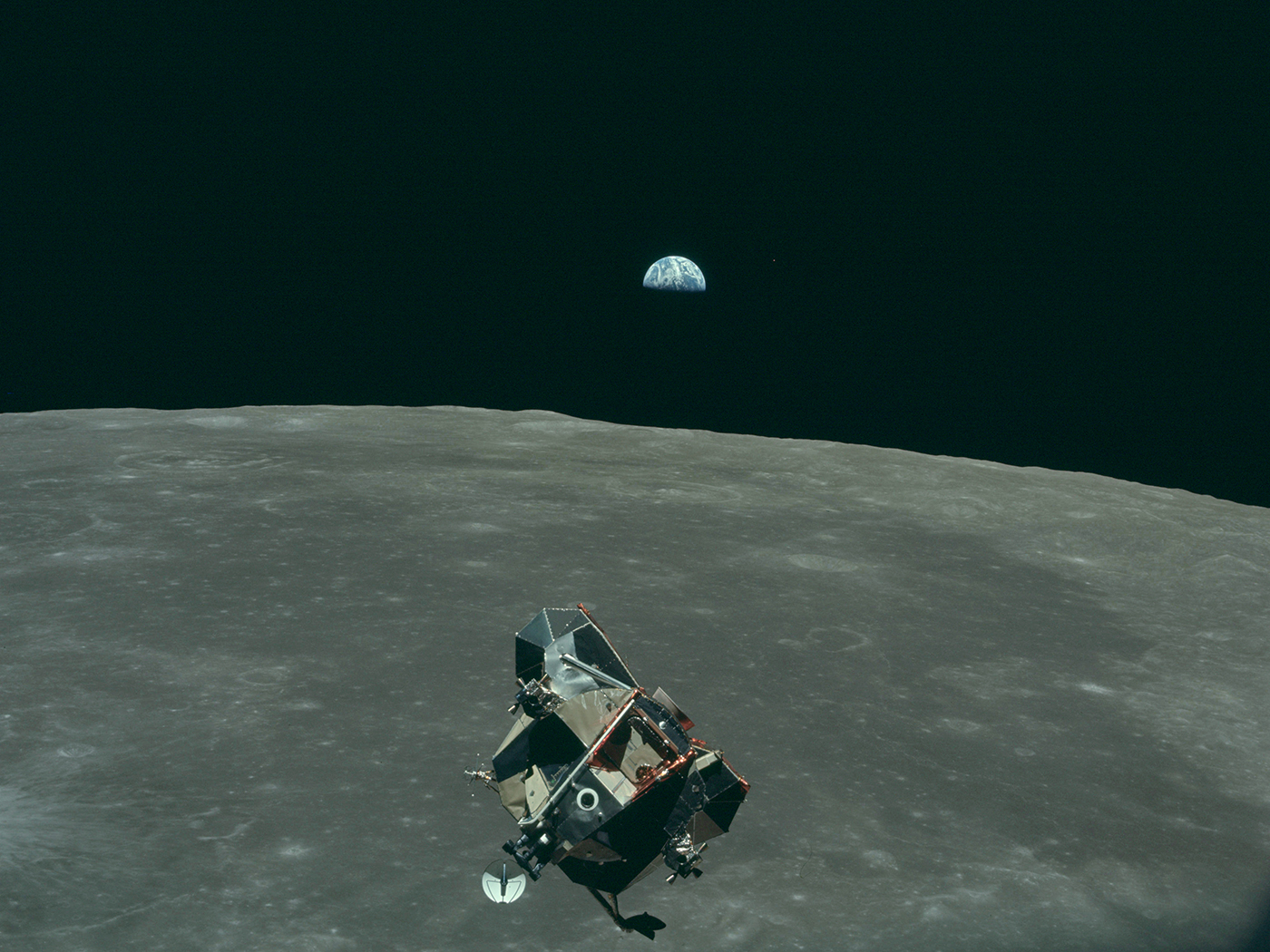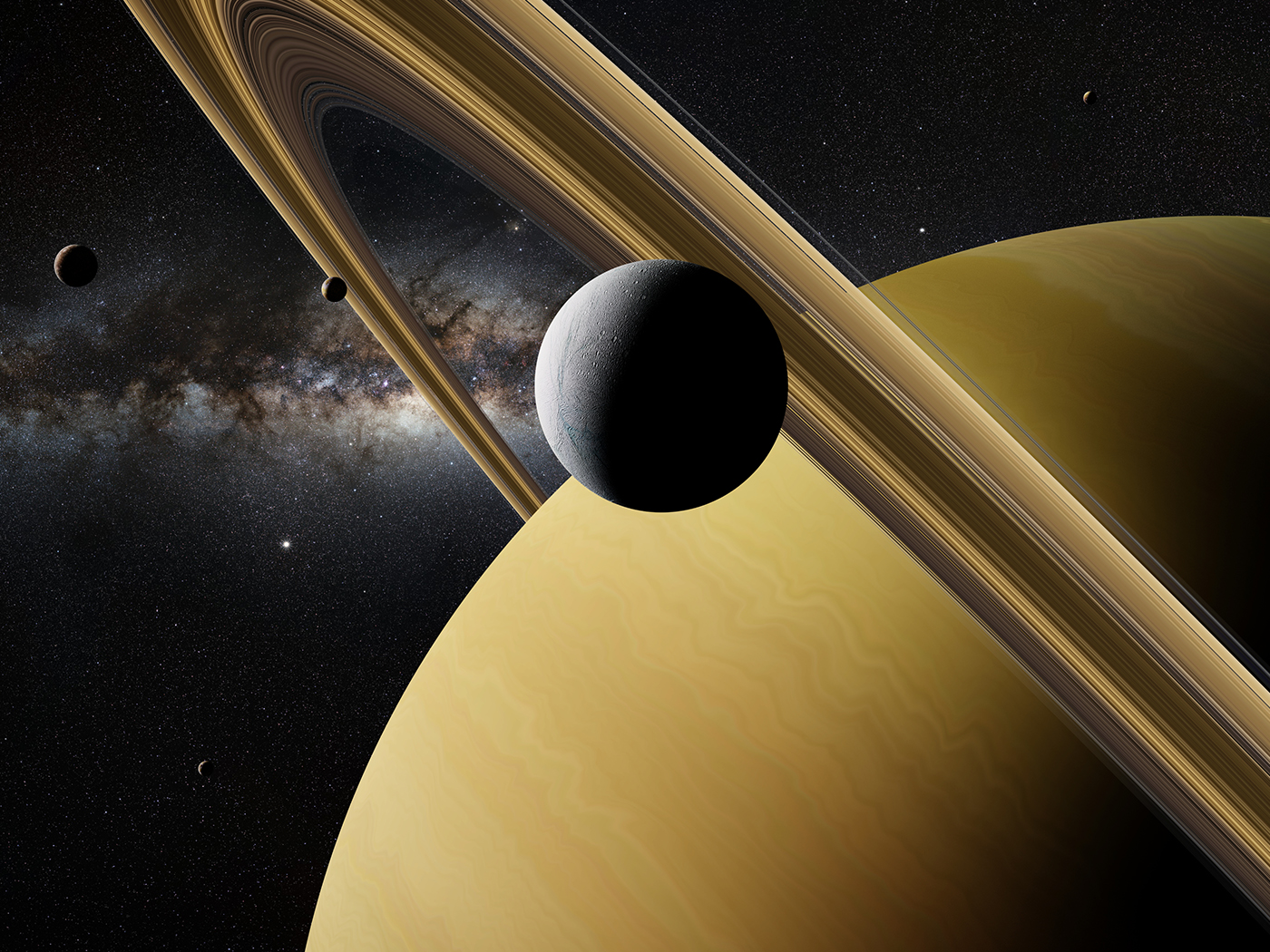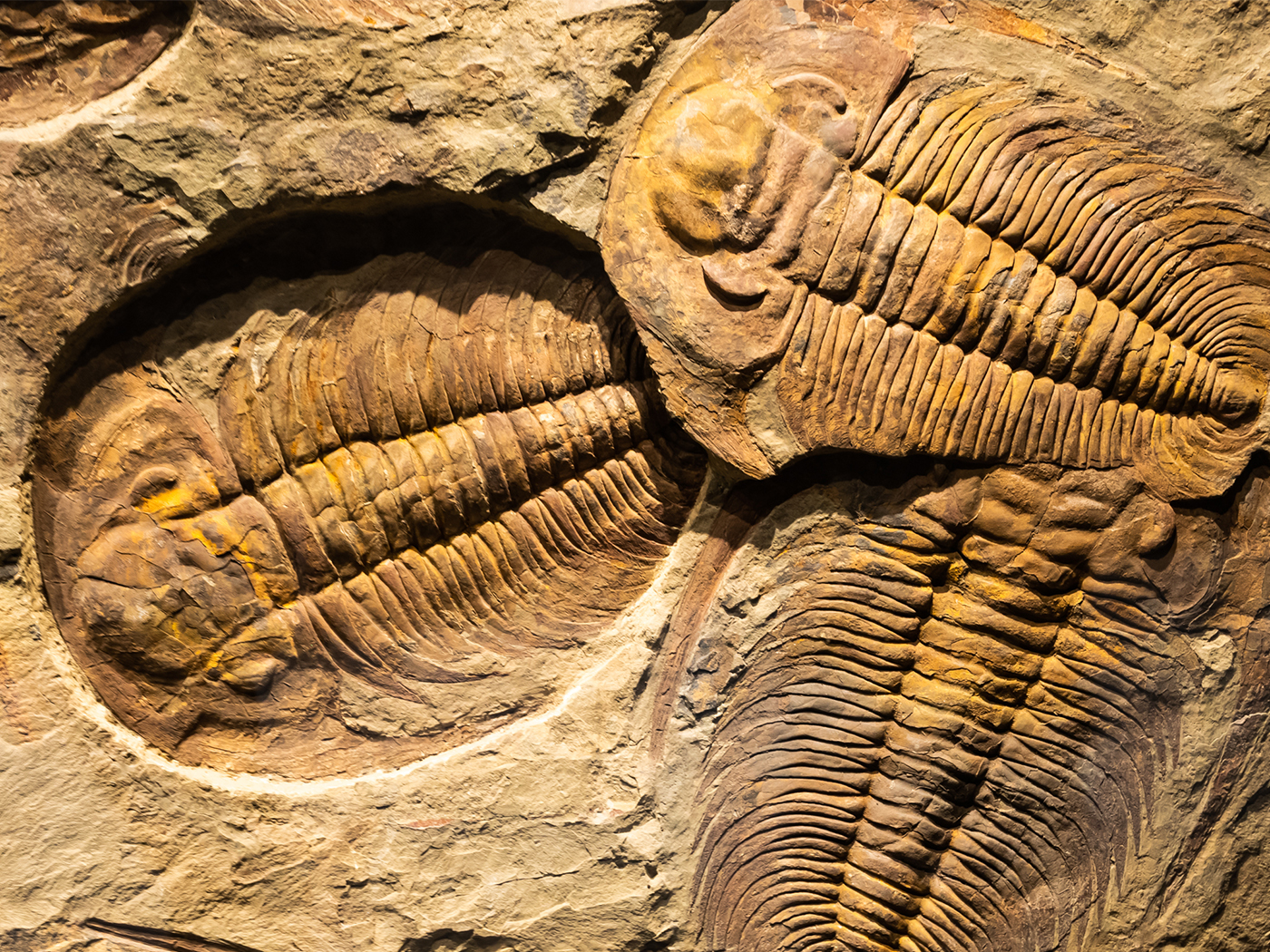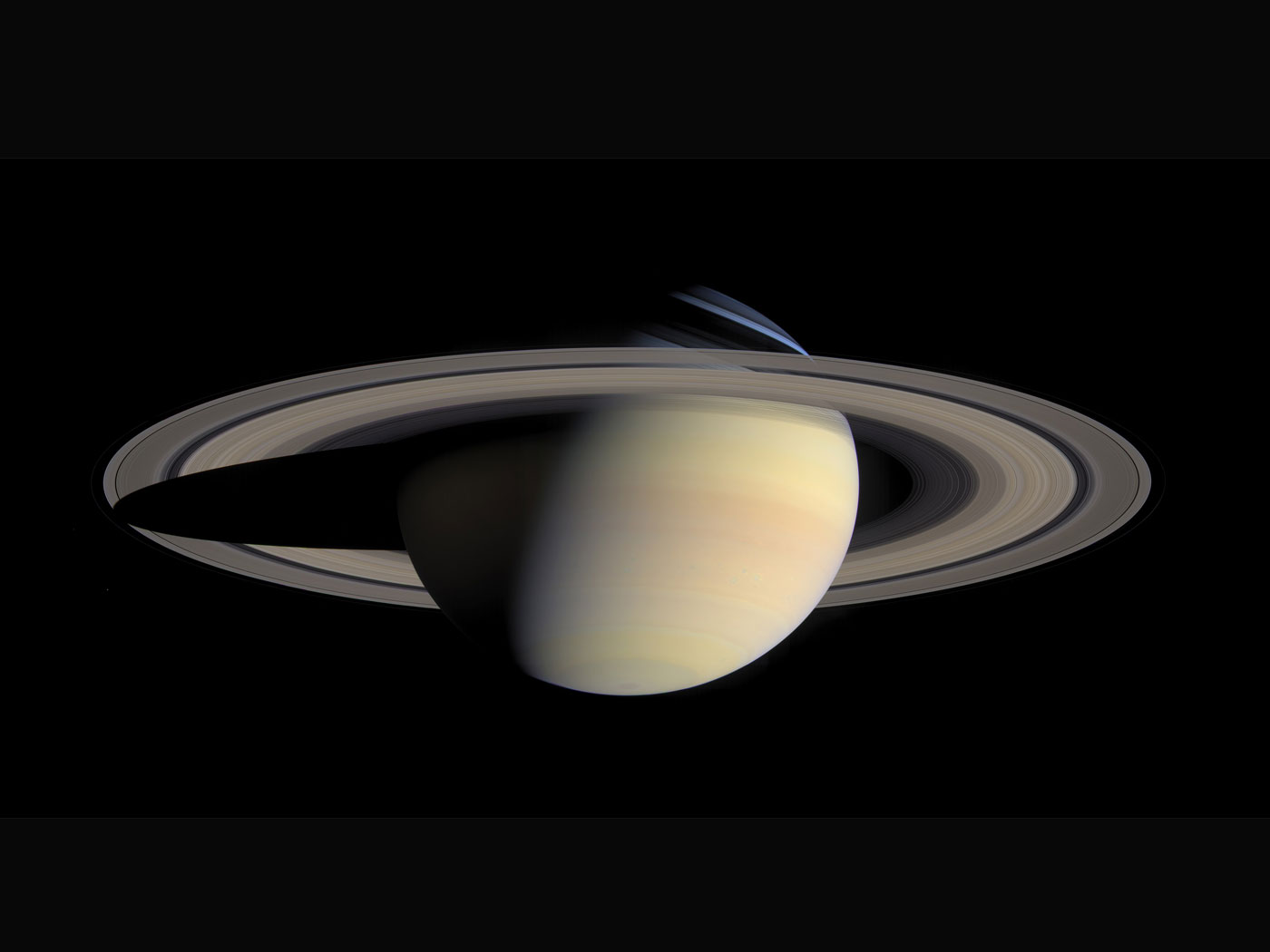On June 7, 2021, NASA’s Juno spacecraft flew closer to Jupiter’s moon Ganymede than any spacecraft had ever before. Ganymede is the largest moon in the Solar System—a body larger than the planet Mercury. Its frozen surface holds interest as a distant water source. Analysts still ponder three unique features of Ganymede, one of which they’re now seeing for the first time. If reactions to youthful features on other bodies out there offer any lesson, then long-age believers will end up once again wrestling with why this moon also looks young.
Juno’s newly released image records only the green part of the spectrum, which NASA rendered in grayscale. Red and blue are on the way and, after processing, should result in a full-color image of Ganymede’s surface. But this green channel is enough to reveal what look like fissures.
A NASA web post that accompanied Juno’s new image noted “long structural features possibly linked to tectonic faults.”1 And faults imply geologic activity, which of course requires energy. If these faults turn out to look like recently formed features, will uniformitarian thinkers craft tales to keep this moon’s geology energized over billions of years? That’s what happened with Earth’s Moon2 and with Pluto.3 If over 4 billion years old, then shouldn’t these bodies all be geologically dead many times over?
NASA scientists have also trained the Hubble telescope onto Ganymede. A newer analysis of 1998 observations revealed water vapor in its atmosphere. Their 2021 report in the journal Nature Astronomy described a process where just enough sunlight hits the equator to vaporize surface ice.4 Lead author Lorenz Roth told NASA, “The water vapor that we measured now originates from ice sublimation caused by the thermal escape of water vapor from warm icy regions.”5 Can ice keep getting sublimated off the moon’s surface for billions of years? Other Solar System bodies are also losing water into space at rates that make them look young.6,7
And like so many unexpected discoveries of still-active magnetic fields in Solar System planets and moons, those 1998 spectra revealed electrified gas bands that “provided further evidence that Ganymede has a weak magnetic field.”3 But it shouldn’t have any magnetic field at all!
A 2015 summary noted Ganymede’s magnetic field strength as higher than Mercury’s and as “a bit of a mystery” because “it should have cooled sufficiently that fluid motions are no longer possible.”8 A century ago, uniformitarian scientists proposed a dynamo theory to explain how the magnetic fields of moons and planets could persist for billions of years.9 This theory requires such bodies to have molten cores. But such cores should have cooled and frozen eons ago, so that bodies like Mercury and Ganymede should no longer have magnetic fields. Yet they do!
Magnetic fields decay like spinning tops. These magnetic fields can’t last billions of years, but they could last thousands of years, even without a dynamo. Since the Lord Jesus created this moon along with its decaying magnetosphere just thousands of years ago, as indicated by Scripture, this mystery disappears.
Magnetism, sublimation, and possible tectonic faulting give Ganymede hallmarks of youth. These three features promise to pose a glitch for old-age thinking but fit recent creation without a hitch.
References
1. See the First Images NASA’s Juno Took As It Sailed by Ganymede. NASA. Posted on nasa.gov June 8, 2021, accessed August 2, 2021.
2. Watters, T. R. et al. 2010. Evidence of Recent Thrust Faulting on the Moon Revealed by the Lunar Reconnaissance Orbiter Camera. Science. 329 (5994): 936-940.
3. At Pluto, New Horizons Finds Geology of All Ages, Possible Ice Volcanoes, Insight into Planetary Origins. New Horizons News Center. Posted on pluto.jhuapl.edu November 9, 2015, accessed August 2, 2021.
4. Roth, L. et al. A sublimated water atmosphere on Ganymede detected from Hubble Space Telescope observations. Nature Astronomy. Posted online before print, July 26, 2021.
5. Hubble finds first evidence of water vapor at Jupiter’s moon Ganymede. NASA. Posted on hubblesite.org July 26, 2021, accessed August 2, 2021.
6. Cassini Spacecraft Reveals 101 Geysers and More on Icy Saturn Moon. Jet Propulsion Laboratory. Posted on jpl.nasa.gov July 28, 2014, accessed August 3, 2014.
7. Bauer, M. Rosetta Arrives at Comet Destination. European Space Agency. Posted on esa.int August 6, 2014, accessed August 6, 2014.
8. Williams, M. Jupiter's moon Ganymede. Physorg. Posted on phys.org/news October 15, 2015, accessed August 3, 2021.
9. Humphreys, D. R. 2013. Planetary Magnetic Dynamo Theories: A Century of Failure. Proceedings of the Seventh International Conference on Creationism. Pittsburgh, PA: Creation Science Fellowship.
Dr. Brian Thomas is Research Scientist at the Institute for Creation Research and earned his Ph.D. in paleobiochemistry from the University of Liverpool.
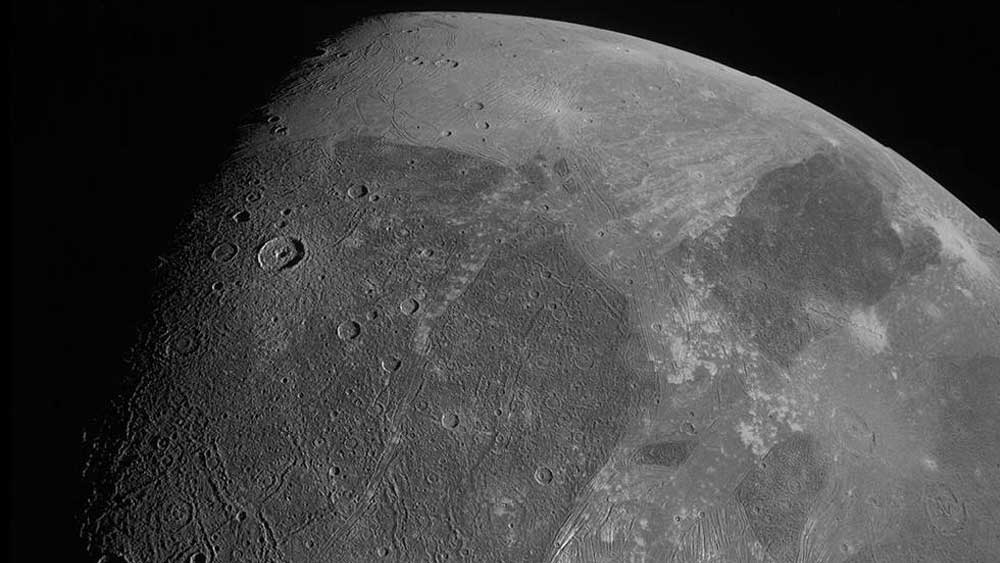
Does Ganymede Look Young?
The Latest
Florida Fossil Shows Porcupines Have Always Been Porcupines
The porcupine is an animal (rodent) that one does not soon forget. It is armed with formidable quills that deter even the hungriest predators. What...
Webb Telescope Discovers Another Record-Breaking Galaxy
Astronomers using the James Webb Space Telescope have recently confirmed that two galaxies are extremely distant, with one becoming the new record holder...
CREATION PODCAST
The Power of Film & Video: Reaching All Ages with Truth | The...
Is there a place for the use of film and video within Christianity? If so, how can we leverage this powerful tool to reach viewers of all ages...
Scaly Skin on a Feathered Dinosaur?
Fossil experts from University College Cork in Ireland took stunning images of Psittacosaurus skin. The dinosaurs’ belly shows patches of skin...
T. rex Not as Smart as Thought
Have movies and most conventional paleontologists got it all wrong? T. rex and other theropod dinosaurs (the meat-eaters) are often portrayed as intelligent...
June 2024 ICR Wallpaper
"For by grace you have been saved through faith, and that not of yourselves; it is the gift of God." (Ephesians 2:8 NKJV)
ICR June...
A “Just-so” Story About Ancient Genes
An evolutionary website recently published “a groundbreaking study” that supposedly identifies a basic, uncomplicated, “simple”...
CREATION PODCAST
Dinosaurs with Bird Brains??? | The Creation Podcast: Episode...
Evolutionists claim that birds are descended from dinosaurs. A feature that is often cited as linking these two types of creatures is the brain....
CREATION.LIVE PODCAST
From Ruins to Revelation: Truths Revealed Through Biblical Archaeology...
The Bible is full of people and places that are seemingly lost to time, but through the field of archaeology, new finds are shedding light on the incredible...
Bergmann’s Rule Falsely Refuted
A recent study of dinosaur sizes claims to break Bergmann’s rule.1 Bergmann’s rule was named after biologist Carl Bergmann, who...




